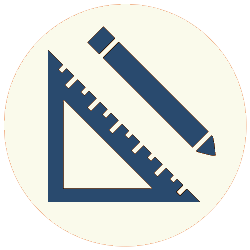The internet uses the Transmission Control Protocol/Internetwork Protocol model, or TCP/IP model, to define the way it moves data about. A protocol is a set of agreed-upon rules for behaviors, procedures or communications. In terms of the internet, a protocol defines the format of data to be transferred, and/or the way in which it is transferred.
The term “TCP/IP” is a bit overloaded. TCP is also the most commonly used protocol at the Transport Layer, while IP is also the main protocol used at the Internet Layer. For example, you might hear of “the TCP/IP link layer,” which is the Link Layer of the TCP/IP model. You might also hear of a “TCP/IP connection,” which is a connection using the two protocols. So, it’s important to understand the distinction between the TCP/IP model itself and the two protocols that form a substantial part of the way the model is implemented.
The TCP/IP Layers
The TCP/IP model defines four logical layers, each having distinct protocols that they use. From top to bottom, they are:
- The Application layer
- The Transport layer
- The Internet layer
- The Link layer
The “bottom” layer (the Link layer) is the layer closest to the actual electrical signal that’s being transferred. The “top” layer (the Application Layer) is the layer that actually interacts with the user. Each layer handles different aspects of the process of moving data on the internet.
The Link Layer consists of the various hardware components of the physical network itself, and also some of the protocols that the internet uses to transfer data between those hardware components.
The Internet Layer solves the problem of how to find the node (individual device) to which data is addressed. It does this by implementing a hierarchical system of addressing using IP addresses.
The Transport Layer addresses the issues of data reliability and application-level data routing.
Finally, the Application Layer is a set of protocols that manage incoming and outgoing data for applications, and providing application-level security to ensure that the data goes where and to whom it’s intended.
Encapsulation
You may think of each TCP/IP layer as containing a unit of data in the layer above it. The layers accomplish this through a process called encapsulation. In this case, encapsulation means enclosing a unit of data with metadata. The layer doing the encapsulating uses this metadata to keep track of the encapsulated data, called a payload, in its own context.
The encapsulated payload is also called a Protocol Data Unit, or PDU.
A Transport layer PDU, then, encapsulates the Application layer data that is the payload of the Transport layer PDU. Similarly, the Transport layer PDU becomes the payload of an Internet layer PDU. Finally, the Internet layer PDU becomes the payload of a Link layer PDU. This Link Layer PDU is called a frame. (The other layers have other names for their PDUs.) A frame is the standard unit of data that gets put out over the internet.
The next dozen or so articles take up the different TCP/IP layers in more detail, starting with the physical network in the Link Layer.

